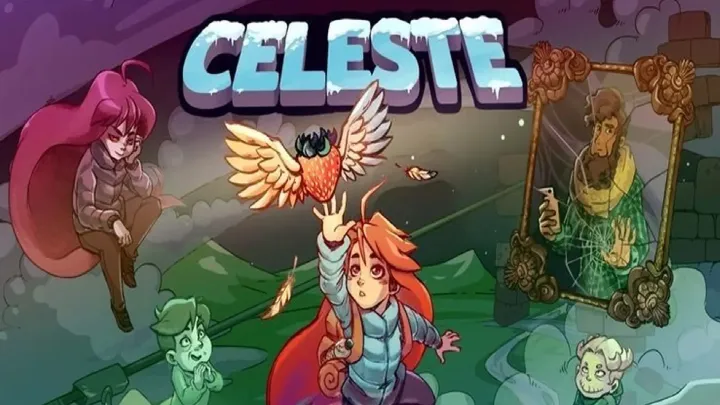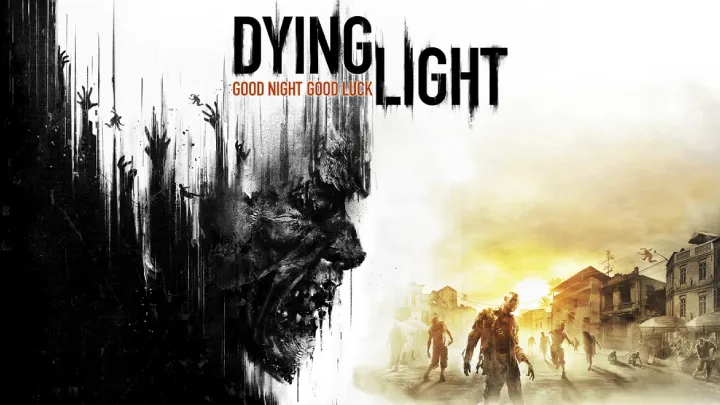
Returnal, developed by Housemarque, is a roguelike third-person shooter that combines fast-paced gameplay with a haunting narrative about trauma, loss, and the struggle for survival. Players assume the role of Selene Vassos, an astronaut trapped on the alien planet Atropos, where she must confront not only deadly foes but also the psychological ramifications of her past. This article delves deeply into the specific issue of trauma representation in Returnal, examining how the game intertwines gameplay mechanics with narrative elements to create a profound commentary on resilience and the human psyche.
The Setting: An Alien World Reflecting Inner Turmoil
Atropos, the planet where Returnal unfolds, serves as both a setting and a character in its own right. The alien landscape is rich with symbolism, mirroring Selene’s internal struggles and emotional state.
The Cyclical Nature of Atropos
Atropos is characterized by its haunting beauty and relentless danger, epitomized by the game's roguelike structure, where players face death and rebirth repeatedly. This cyclical nature reflects Selene's own trauma, as she is trapped in a loop of loss and survival. Each cycle forces her to confront her past, creating a sense of urgency and despair.
Environments as Emotional Landscapes
The diverse environments on Atropos—ranging from lush forests to desolate ruins—symbolize different aspects of Selene's psyche. For instance, the overgrown biomes may represent her repressed memories and emotions, while the hostile, barren areas signify her feelings of isolation and hopelessness. The world itself becomes a canvas for exploring her internal battles, emphasizing the psychological themes of the game.
The Protagonist’s Journey: Selene’s Psychological Struggles
Selene's journey is not merely about survival; it is a profound exploration of her mental state. The narrative gradually reveals her history and the trauma that shapes her actions.
The Impact of Loss
From the outset, players learn that Selene is haunted by the death of her child, a pivotal event that drives her actions and decisions. This loss manifests throughout the game, as she encounters echoes of her past in various forms. The emotional weight of her grief adds depth to her character, illustrating how trauma can shape one's identity and motivations.
Confronting the Past
As players progress, Selene's encounters with holographic recordings and remnants of her previous selves serve as confrontations with her past. These moments are not just narrative devices; they are integral to understanding her psychological landscape. Each encounter forces Selene to confront her memories, pushing her toward a path of healing or further despair.
The Gameplay Loop: Death and Resurrection
The core gameplay mechanic of Returnal—death and resurrection—mirrors the cyclical nature of trauma and recovery. This gameplay loop is crucial for understanding the psychological themes the game explores.
The Roguelike Structure as Metaphor
In Returnal, every death leads to a new beginning, represented by Selene's awakening at the crash site. This mechanic reflects the idea that recovery from trauma is not linear; it involves setbacks and challenges. Each playthrough allows players to learn from their mistakes, paralleling the process of grappling with personal demons in real life.
Learning Through Repetition
The repetition inherent in the game encourages players to adapt and grow. As Selene faces the same enemies and challenges, players develop strategies and skills, symbolizing resilience in the face of adversity. This progression highlights the importance of perseverance, suggesting that healing from trauma often requires facing the same fears repeatedly until they lose their power.
Environmental Storytelling: Unraveling Selene’s History
Returnal utilizes environmental storytelling to enhance the narrative, revealing Selene’s backstory and emotional state through the world around her.
The Use of Visual Cues
The game is filled with visual cues that hint at Selene’s past and emotional struggles. For example, the presence of broken toys and eerie remnants of her former life scattered throughout Atropos serve as reminders of her grief and loss. These details enrich the narrative, allowing players to piece together her history without overt exposition.
The Significance of the House
One of the most striking elements of Returnal is the haunted house that Selene encounters. This location acts as a physical manifestation of her trauma, filled with memories and echoes of her past life. Each exploration of the house reveals more about her emotional state, serving as a poignant reminder of the connection between environment and mental health.
The Role of the Unknown: Fear and Anxiety in Gameplay
Fear and anxiety are palpable throughout Returnal, both in the gameplay and the narrative. The game masterfully uses these emotions to reflect Selene’s psychological struggles.
Creating Tension Through Uncertainty
The unpredictable nature of Atropos, filled with shifting landscapes and hostile creatures, creates an atmosphere of constant tension. This uncertainty mirrors Selene’s mental state, as she grapples with the unknown aspects of her trauma. Players must navigate not only the physical threats but also the psychological weight of her experiences.
The Psychological Horror Element
Returnal incorporates elements of psychological horror, heightening the sense of dread and unease. The game’s ability to evoke fear is not solely through jump scares; it is deeply rooted in Selene’s internal conflicts. The horrors she faces are not just external monsters but also manifestations of her grief and guilt, creating a powerful connection between gameplay and emotional resonance.
Symbolism of the Cycle: Trauma and Healing
The cyclical nature of Returnal serves as a powerful symbol for trauma and the healing process. The game explores how individuals confront their pasts and the paths they take toward recovery.
The Rebirth Concept
Selene’s repeated deaths and subsequent rebirths symbolize the cyclical nature of trauma. Each time she awakens, she has the opportunity to learn and grow, reflecting the idea that healing is an ongoing journey rather than a destination. This metaphor reinforces the notion that recovery involves facing one’s fears repeatedly until they can be transformed.
The Final Confrontation
As Selene progresses through the game, the climax involves a confrontation with her past. This moment is pivotal, representing the need to face trauma head-on to achieve healing. The narrative culminates in a powerful message about the importance of acceptance and understanding in overcoming personal struggles.
The Impact of Sound Design: A Tool for Emotional Engagement
Sound design in Returnal plays a crucial role in enhancing the narrative experience. The auditory elements contribute to the overall atmosphere and emotional depth of the game.
The Haunting Soundtrack
The soundtrack, composed by Bobby Krlic, is integral to the psychological experience of Returnal. The haunting melodies and unsettling soundscapes evoke a sense of dread and unease, reinforcing the themes of trauma and isolation. Each area has its unique sound design, enhancing the emotional weight of Selene's journey.
Audio Cues and Immersion
Sound effects serve to immerse players in the game world, heightening the tension during combat and exploration. The use of audio cues to signal danger or the presence of enemies creates a visceral connection to Selene’s experiences. This interplay between sound and gameplay amplifies the emotional impact of her struggles.
Community Reception: Analyzing Player Responses to Themes
The reception of Returnal has sparked discussions among players about its themes of trauma and resilience. Feedback from the community highlights the effectiveness of the game’s narrative approach.
Positive Reactions to Emotional Depth
Many players have praised Returnal for its emotional depth and the way it tackles complex themes. The exploration of trauma resonates with individuals who have experienced loss, making Selene’s journey relatable. This connection enhances player engagement and fosters a sense of empathy for her struggles.
Critiques of Accessibility
Conversely, some players have criticized the game for its challenging gameplay mechanics, which may detract from the narrative experience. The difficulty level can make it hard for some players to fully engage with the story, raising questions about accessibility in games that tackle profound themes. Balancing gameplay and narrative is crucial for ensuring that all players can appreciate the emotional weight of the story.
The Future of Narrative in Gaming: Lessons from Returnal
Returnal represents a significant step forward in the integration of narrative and gameplay, particularly in addressing themes of trauma and resilience. The lessons learned from this title can inform future developments in the gaming industry.
Embracing Complex Themes
As games continue to evolve, embracing complex themes like trauma can enrich storytelling and player experiences. Developers have the opportunity to explore the human condition in meaningful ways, creating narratives that resonate with players on a personal level.
Balancing Gameplay and Narrative
The challenge remains to balance gameplay mechanics with narrative depth. Future titles can take inspiration from Returnal by ensuring that challenging gameplay does not overshadow the emotional core of the story. By creating accessible experiences that allow players to engage with profound themes, developers can foster greater connections between players and their narratives.
Conclusion: The Interplay of Trauma and Resilience in Returnal
Returnal is a groundbreaking title that skillfully intertwines gameplay with profound themes of trauma and resilience. Through Selene's journey, players are invited to confront their emotional struggles and reflect on the nature of healing. The cyclical gameplay loop, environmental storytelling, and immersive sound design all work together to create a rich narrative experience that resonates deeply with players. As the gaming industry continues to evolve, Returnal serves as a powerful example of how games can tackle complex psychological themes, offering players not only entertainment but also an opportunity for introspection and understanding.


















